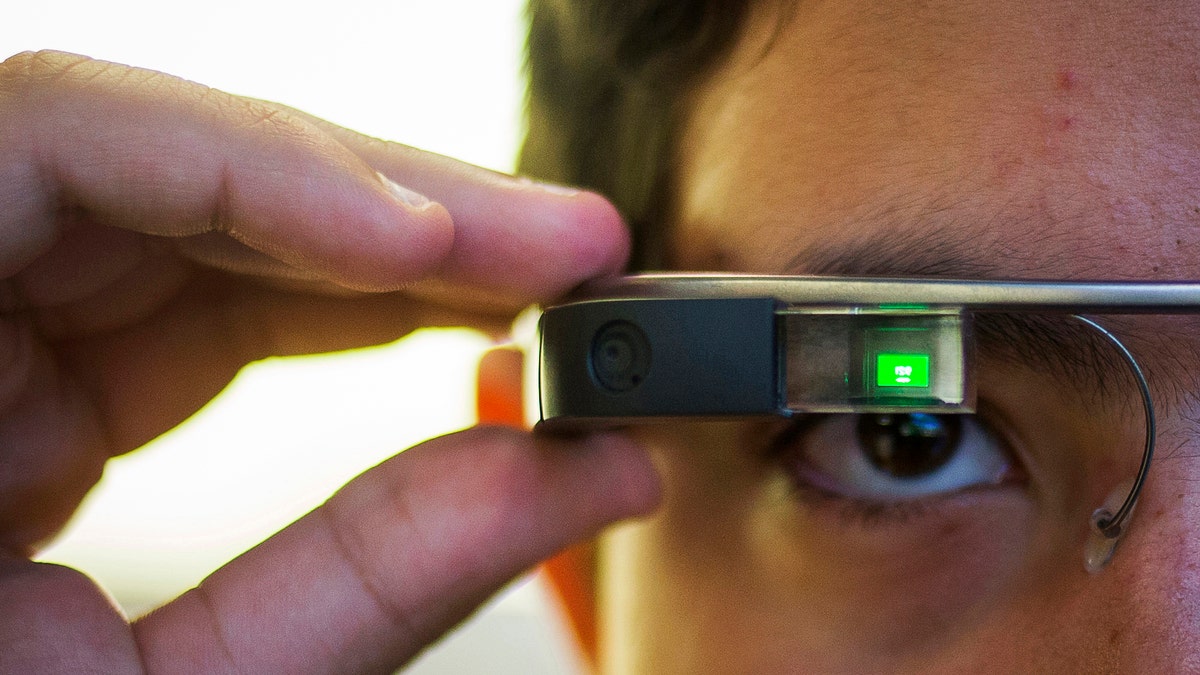
File photo - Tiago Amorim of Brazil, poses with a Google Glass eyewear frame in Manhattan, New York Sep. 19, 2014. (REUTERS/Adrees Latif)
We’ll wear just about anything on our wrists. From watches to jewelry and emblems of our favorite charities and causes, humans have never been afraid to slip on a statement. We’ll even wrap our wrists with products that supposedly improve our health and our performance in the absence of any scientific proof that they work.
But our faces are a different story. That, along with a multitude of other issues, from battery life to lack of apps, has fogged up the future of Google Glass. After two years in testing, it still doesn’t look ready for the mainstream, and even the technology’s biggest proponents seem to have second thoughts.
Is Glass about to hit its stride, or about to run out of steam?
An expensive proof of concept
In November, Reuters reported that nine out of 16 Glass developers it contacted had ceased development “because of the lack of customers or limitations of the device,” while three more have abandoned consumer-centric apps to focus on business projects.
Used Google Glass developer kits, which originally sold for $1,500, often show up on eBay at less than half price, or no bids at all.
Google cofounder and Glass evangelist Sergey Brin recently showed up to a red-carpet event without his precious specs.
Tom Emrich, an independent technology consultant, founder of We Are Wearables, and early Google Glass Explorer, thinks the sheer unfamiliarity of Glass may have something to do with its struggle.
“When you compare Google Glass to the fitness trackers, smart watches and other wearables, it’s easy to pronounce [it] as dead or not as successful,” says Emrich, “But it’s always had a hard road compared to the other wearables on the market because it’s so new.”
But Emrich has concerns with Glass’ function, too. While he loves being able to document his life hands-free with the built-in camera, for instance, he laments the fact that it’s his favorite feature — “It’s a little sad, because it’s capable of so much more than taking pictures.”
Battery-life presents an even bigger issue for him. “A day-to-day life tool can’t last just two to three hours,” Emrich points out. “It’s especially problematic if you wear a prescription. Needing to take off my glasses to charge means I will be blind during that charging time. [It’s that, or] I have a pair of glasses with a dead piece of technology on them. That alone doesn’t bode well for the technology. It needs to last at least until I get home.”
Consumers be damned
If Glass is looking more and more like a bust for consumers, does that mean it’s game over?
Not necessarily. There’s always the workplace. Unlike Apple, Nike and FitBit, which have done little to embrace the enterprise potential of their products, Google Glass developers are thinking about the face of business.
Jake Steinerman is another Google Glass Explorer and also the co-founder of DriveSafe, a start-up focused on delivering “wellness data” to professional drivers via Google Glass. One of the core DriveSafe functions is the ability to keep drivers awake (“OK Glass, keep me awake”) by sensing drowsiness or distraction.
Steinerman believes that Google Glass will actually prove to be the exception to the rule as far as mass-market adoption is concerned. “Traditionally, technology has caused the consumerization of the enterprise IT market,” he points out. “With Glass I think we’ll see that flipped – companies will, and are, finding indispensable ways to leverage Glass as a platform.”
Emrich agrees, saying, “Where these devices are used as tools, we’ll see them adopted much faster than on the mainstream side.”
Safety seems to be a common theme when it comes to Google Glass at work. While DriveSafe is attempting to improve driver safety, Michigan-based Plex Systems is looking to do the same for factory floors. “We see manufacturing as the first killer app for Google Glass,” said research and development vice president Jerry Foster said at the launch of its Glass pilot project in June. The idea is that plant workers will have access to all the information they need to do their jobs, hands free.
Perhaps this notion of being apprised of critical information, when you need it, will be the key to adoption. Steinerman thinks it will. “Because of its placement on your head, close to your eyes, it can deliver information that traditional smartphones would never be able to produce,” he says. “The ability to have a microphone close to your mouth, always listening and waiting to deliver information to you, I have found to be extremely valuable.”
Of course, always having information in your field of vision can be overwhelming, too. “What I don’t like are the notifications, because they aren’t contextual and there’s no way to filter them based on what I want to see and what I don’t want to see,” Emrich told us. “Google Glass could have solved the ergonomic problem with having to glance down at a smartphone constantly, yet having every single text message and email pop-up is not helpful.”
Invisible is key
If there’s one thing everyone seems to agree on, it’s that technology behind Glass will need to become even more invisible before people buy in. “Once the technology disappears in the eye of the consumer, no pun intended, I think there will be a lot less pushback than what we’ve seen in the last one or two years,” Steinerman says.
Related: Is this our first look at Google Glass 2?
That could mean anything from new designs to new, more compact technology inside. Interestingly enough, a new partnership with Intel means its chips will power the next version of Glass, which could move things in the right direction.
Will it be enough to push knock Glass of its awkward podium and into the mainstream? We’ll see.
